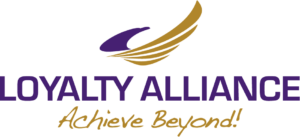This is the third article in a mini-series of three articles.
We have already talked about People and Process in previous months. This month we will focus on Planning / Preparation.
Have you ever thought about the difference between Firefighters and Pyrotechnicians?
Firefighters: They wait in the firehouse until the alarm goes off. Then they race to the scene of the fire, put it out, and then go back and wait for the next fire. Despite the fact that they do occasional fire safety education, they are reactive in their work.
Pyrotechnicians: They select the fireworks that will go off, the sequence, the music, and the timing. They are totally proactive in their jobs.
Both are talents and both are and can be learned skills. But different jobs and roles require different skills.
So, what are you? What about your staff? What did you hire? What is supported and recognized in your company culture? What do you need to drive your organization forward?
What I offer to you this month is to consider if you have trained and conditioned your employees to be the consummate firefighter through action and praise, while verbally urging them to become better pyrotechnicians. Therein lies a conflict.
The problem is this. Proactive skills are exactly that – skills. They need to be learned, practiced, and fine-tuned if we are to be good at them. When we are constantly fighting fires, we may only have a few short minutes to put on our “proactive” hat. Just when we think we’ll have time to do something proactive – DING! DING! DING! The fire alarm goes off again and we rush off to put out the next fire. (And often those Firefighters get all the praise and glory in an organization while little praise and recognition is given to the Pyrotechnicians who avoid having fires to put out.)
Another thing that really perplexes me is the following: Why is it that we very often rush through, or skip the planning stage of a project? We get so excited to jump right in and begin “doing something” and/or we say that there isn’t enough time to plan it out beyond, “Here is the idea. Go!”.
And when a project is assigned to us, why we are urged to get quick answers and results? We feel pressured to start “working.”
What I don’t understand is that while we don’t/can’t/won’t take the time to plan up front for 2 or 3 hours, we almost always hit the point in the project when we need to “regroup.” “Regroup” has become a common phrase in companies today. We “regroup” because things aren’t going the way we anticipated. How is it that we can always find the 15 hours (or 10, or 20) needed to undo the work that was done, fix the problem, redo the work, and get back to where we were before we “regrouped,” but we rarely find the time for a couple hours of planning up front?
Strategic Planning
I once met with a manufacturing company outside Chicago to help them plan for their next two years of growth. The president knew where he would like the company to be in terms of revenue, profit, and implementation of their Lean Manufacturing initiatives. What he needed was his management team’s support and dedication.
We conducted a planning session with the president and the department managers. The president outlined his vision and goals to the group. Each person had the opportunity to ask questions about the goals, challenge the numbers, and ultimately understand the target for the next 24 months.
Once everybody understood where the company was going and agreed that it was achievable, we turned our attention to “What will it take to pull this off?” Each manager detailed what his/her department would need to change or need to invest in if the goals were to be met.
The president learned a lot that day. He had the raw material he needed to devise a very comprehensive plan that would bring them toward their goals. The managers also learned many things about the other departments. They saw that Purchasing was going to need more support and investment than anyone else and that Sales was ready to open the flood gates for increased sales. However, Sales also learned that the rest of the organization wasn’t ready for the floodgates to be opened right now. Too many other things needed to get into place or else the company would have been buried by a surge in orders.
Had the group not met together and planned together, each department would have been off making plans on their own – unaware of what impact their actions might have on others in the company. The management team saw the big picture from the session and the president wasn’t the one trying to paint the picture for everybody. They painted the picture themselves.
Taking the time to plan and prepare for upcoming changes, projects, and strategic initiatives does not have to be complicated. Remember that people accept change better when there is a focus on processes, when they are included in the process, when they are allowed and encouraged to ask questions or voice concerns, and when they feel that there is a plan in place so that they don’t have to “regroup” later.
So, if you really want people to be proactive and help drive your company forward toward a great future, create opportunities for them to build and hone their proactive skills. The first step to becoming proactive is to learn to plan.
The Benefits Planning:
- Lower costs by eliminating rework and “regrouping”
- Increase productivity by making sure there is a plan and people know their priorities that will bring them closer to the goals
- Improve morale by opening communication lines, minimizing stress and frustration for those who typically don’t have a role in the planning process, and validating employees’ contributions to the organization’s strategic goals
- Develop peoples’ skills by giving them a vehicle for learning how to be proactive
A Few Best Practices
- Conduct a planning session for every major project or initiative (ideally in a structured environment using an IMT Conversation Framework or other collaborative planning and preparation tool)
- Make sure that the goal is clear and attainable (stretch is OK)
- Make sure the project or initiative champion participates in the session
- Use a facilitator from outside the area (or organization) to bring fresh perspectives and unbiased suggestions to the group
Next month will focus on overcoming barriers and resistance to change. While it may seem similar to bits and pieces from previous articles, I’ll try to offer some strategies that can work in almost every situation.
Until next month!
Patrick Seaton
Innovative Management Tools LLC
LinkedIn: https://www.linkedin.com/in/patrickseaton/
- Nurturing Innovation Through Psychological Safety: A Journey with Conversation Frameworks - July 26, 2024
- Unveiling Diversity in Problem-Solving: A DEI Perspective on Conversation Frameworks - July 11, 2024
- Bridging Gaps and Building Solutions: The Unfolded Story of Innovative Management Tools - June 17, 2024

